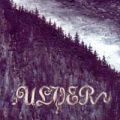| Windowpane |
|
24 Nov 2006 10:59 | Quote |
United States  Posts: 37
|
learn other scales like you can learn the major ones? I was thinking that after I got the 5 poisitions of for the major scales down, I would start to try to learn the minor pentatonic scale> Since you guys always talk about it. Whats a good way to learn that one? Are there "positions" for all the notes? Or do you have to learn all the "keys" seperately? That 5 poisions thing helps so much with major scales by the way. Thanks alot guys. :) |
| Windowpane |
|
24 Nov 2006 11:00 | Quote |
United States  Posts: 37
|
Sorry for my shitty typing. |
| mightydave |
|
24 Nov 2006 11:19 | Quote |
Joined: way back Belgium  Karma Karma: 2 
|
yeah if i understand you well , you have the 5 positions for all other scales , like harmonic minor , pentatonic , blues etc... with pentatonic it are the same positions as major except 2 notes left out , so it should be easy to learn once you learned the major ones
http://www.theorylessons.com/pentpos.html here are the 5 positions for a pentatonic scale
i hope this is what you wanted to know |
| paerdeveygh |
|
24 Nov 2006 11:24 | Quote |
Joined: way back Finland  Lessons: 1 Karma 
|
You just use the same 5 patterns you already know, but you shift them 3 frets up, but the rootnote has changed.
for example: the pentatonic major scale:
--1-[----[----[--R-
--1-[----[----[--4-
--R-[----[--3-[---- R= root
--1-[----[--3-[----
--1-[----[--3-[----
--1-[----[----[--R-
now you shift this pattern up three frets for the pentatonic minor:
--R-[----[----[--4-
--1-[----[----[--4-
--1-[----[--3-[----
--1-[----[--R-[---- you see, the root has now changed, but it´s still
--1-[----[--3-[---- the same pattern
--R-[----[----[--4-
This goes also for the 4 other patterns,
a good website to practice this is www.jamcenter.com, because it has a blues jam-machine,, |
| Windowpane |
|
24 Nov 2006 16:11 | Quote |
United States  Posts: 37
|
Thanks alot! Yes, thats what I wanted to know. So I can basically learn any new scale by learning positions? This will help me alot till I can finanly learn all my notes. Speaking of which, is there a good way to learn them? I'm going to take the C major scale approach. Just go through the scale enough times till I know all my whole notes then go on to learn the accedentals. Anyone know a better way? You guys rock! |
| mightydave |
|
24 Nov 2006 17:36 | Quote |
Joined: way back Belgium  Karma Karma: 2 
|
there's a program called guitar scales method which gives you a good idea how to learn every major scale( +pentatonics and blues). it's an approach which takes time but you'll learn them throughly and you'll learn more like what notes to pick on which chord etc...
it teaches you the five positions , learning where each position is in each key then you learn what positions are in each key and this way you learn it fluently on the whole neck and in all keys.
if you're really serious about this i should recommend this program , if you're not really motivated or want to do all the hard work don't start with it !
good luck |
| Moonlit |
|
24 Nov 2006 17:40 | Quote |
United States  Posts: 85
|
Just remember, it is important that you know the notes in different scales/keys. Also, you should know the different interval patterns of scales/modes. Patterns help you to move around the fretboard with ease. |
| Windowpane |
|
24 Nov 2006 19:54 | Quote |
United States  Posts: 37
|
Yes, i'm very serious. If I had money, i'd buy the program you suggested rigth away. That sounds like my kinda deal. :)
Interval patterns? I'm not sure how to find out what modes are. I'm sorry, I know you guys get alot of newb traffic in here and have answered these questions 4732190840921 times. But everything you guys talk about helps so much! Your entire last post interested me. I just dont know how to go about it. Maybe the circle of 5ths? |
| paerdeveygh |
|
24 Nov 2006 20:01 | Quote |
Joined: way back Finland  Lessons: 1 Karma 
|
Hey Windowpane!, good you´re going to try the C major scale approach, perhaps you also want to try the D major and the E major scale approach. After that you might consider the F and the G major approach, and of course the A and the B major approach, and of course the ones in between, like the F# and the Bb approach :)
(you should be able to play any scale in every position, of course, aye :) |
| Moonlit |
|
25 Nov 2006 00:11 | Quote |
United States  Posts: 85
|
Learning the patterns helps you to be able to switch keys easily.
There is a specific interval pattern for every scale/mode.
For example, the Major Scale follows WWHWWWH. That is an interval pattern.
You can understand this by looking at the notes in any Major Scale.
C Major has C,D,E,F,G,A,B
That is a whole step(2 frets) between C and D, whole step between D and E, half step(1 fret) between E and F etc...
Modes are thought of as a scale based off of each degree(note) of a scale.
C Major has notes C,D,E,F,G,A,B
All of the modes of the Scale use the same notes, with the tonic or root being different.
C Ionian(The Major Scale)Self explanatory
D Dorian(Minor mode)This isn't as sad sounding as other minor modes
E Phrygian(Minor mode)This sounds very eastern/egyptian like
F Lydian(Major mode)This sounds very bright.
G Mixolydian(Major mode)This sounds sort of like a dominant(7) chord
A Aeolian(The Minor Scale)Self explanatory
B Locrian(half diminshed mode)This sounds dark and angry
|
| Windowpane |
|
25 Nov 2006 11:22 | Quote |
United States  Posts: 37
|
So what you're saying is that if you are soloing in, let's say, the key of CMaj and you are working up and down a particular pattern. Say you stop on D and branch off into another pattern you know from there. Making th root note D. Thats a mode? Sorry if I seem stump dumb. Thanks alot. You are helping to understand. Does this change the key also? |
| mightydave |
|
25 Nov 2006 15:44 | Quote |
Joined: way back Belgium  Karma Karma: 2 
|
you can also download the the program for free... of course we don't do this ... ahum is it allowed to post a link here? |
| Moonlit |
|
27 Nov 2006 01:48 | Quote |
United States  Posts: 85
|
You need to change the context. You need to use chords that resolve to the tonic note of the mode you want to use. |
| Windowpane |
|
27 Nov 2006 10:56 | Quote |
United States  Posts: 37
|
Oh ok. So when i decided to start a "pattern" from a new note in my previous scale, I just change the progression too? Again, does it change keys? |
| paerdeveygh |
|
27 Nov 2006 12:10 | Quote |
Joined: way back Finland  Lessons: 1 Karma 
|
No, normally a piece stays in one key, and you use the same chord progression. The key determines the chord progression you use. The chords you use in a major piece are based on the seven notes (scale degrees) of the major scale. |
| Moonlit |
|
28 Nov 2006 18:24 | Quote |
United States  Posts: 85
|
The progression does change in all types of modern music, when you want a change of mode. It usually uses chords diatonic to the relative Major key, but some accidentals may be used to lead into a new chord. A change of mode isn't really a change of key, but a change of "mood". |
| paerdeveygh |
|
29 Nov 2006 11:49 | Quote |
Joined: way back Finland  Lessons: 1 Karma 
|
I don't really understand what is meant by: "The progression 'does' change in all types of modern music". I mean, if you have a song in a major key, you normally use the I,ii,iii,IV,V,vi.vii* chords, right? So how does this progression change. If somebody please could explain...
|
| paerdeveygh |
|
29 Nov 2006 11:58 | Quote |
Joined: way back Finland  Lessons: 1 Karma 
|
I forgot to add: Or does the progression only change when accidentals are used, because they don't belong to the "normal" progression? |
| Moonlit |
|
29 Nov 2006 18:25 | Quote |
United States  Posts: 85
|
The triads off each degree are the chords diatonic to the Major key. They aren't a progression. They are the chords most often used to form one, but aren't the only ones used to make one. When trying to switch the tonic/mode, such as going from C Ionian to A Aeolian, you might use an E7 chord, which is not diatonic to the Major key. This is because it has G#, which serves as a leading tone into A. It establishes A as the tonic note much better than any of the diatonic triads/chords could. |
|
|





